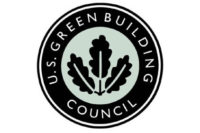New alternative compliance paths available for International LEED Projects

A new set of Global Alternative Compliance Paths, or Global ACPs, are now available for all commercial projects pursuing LEED green building certification using the 2009 versions of the rating systems. Global ACPs offer a flexible method for projects around the world to demonstrate compliance with the LEED credits that are traditionally more challenging for projects outside of the U.S.
"Global consistency and a regional approach mean providing flexibility in referenced standards while ensuring that LEED certification signifies the same level of excellence worldwide," said Scot Horst, Senior Vice President, LEED, USGBC. "By focusing on global standards and solutions, these Alternative Compliance Paths make LEED increasingly flexible and ensure a common language for all green buildings."
The use of LEED outside the U.S. continues to grow rapidly. In 2012, projects outside the U.S. pursuing LEED certification make up over 50 percent of all floor area of all registrations. As the most widely recognized and used green building program, LEED is certifying 186,000 square meters of commercial building space each day, comprising more than 49,100 LEED-certified and registered projects in 135 countries.
With a growing stock of existing buildings throughout Europe, members of the LEED International Roundtable including Finland, France, Norway, Poland, Romania, Spain, Sweden and Turkey, led by Green Building Council Italia, are working to address the growing needs of this sector in their area by developing LEED credit options that address geographic and regional issues. These specific Regional Alternative Compliance Paths are being developed for projects in Europe pursuing the 2009 version of LEED for Existing Buildings: Operations & Maintenance. This global approach to technical development of the rating system is just a beginning.
Additionally, new Regional Priority Credits have been released for projects using the 2009 versions of LEED for New Construction and are for use in Argentina, Brazil, Chile, Colombia, Mexico and Turkey. Regional Priority Credits are not new LEED credits, but instead are existing credits that are designated as being particularly important for various regional issues. If project teams achieve a Regional Priority Credit, they receive a bonus point in addition to their project's total points. The additional LEED points available encourage projects to pursue credits that address unique regional environmental priorities. Regional Priority Credits will be expanded to additional countries and rating systems in the future.
The LEED International Roundtable is an advisory group of green building councils and non-profits representing 21 countries (soon to be 28 countries) working to strengthen LEED's international focus to make the rating system more effective globally.
To learn more about the Global and Regional ACPs, visit www.usgbc.org/leed or email international@usgbc.org.
Looking for a reprint of this article?
From high-res PDFs to custom plaques, order your copy today!





